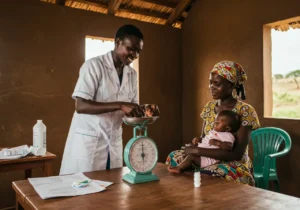The World Health Organization’s 2025 Global Health Statistics Report delivers a sobering message: progress in reducing preventable deaths is slowing worldwide. While the 1990s and early 2000s saw rapid gains in life expectancy, maternal health, and childhood survival, the pace has now stalled in many regions. The report highlights major challenges in public health systems, inequities between countries, and the continued rise of preventable deaths. This post explores WHO’s findings, why the slowdown matters, and how communities and policymakers can respond.
Understanding WHO’s 2025 Findings
The WHO report reviews mortality data from more than 190 countries. It shows that:
- Life expectancy in some countries is plateauing, with little improvement since 2020.
- Maternal and child mortality reductions have slowed, especially in low- and middle-income regions.
- Infectious diseases such as tuberculosis and malaria are resurging in certain areas due to weakened health systems.
- Non-communicable diseases (NCDs) like diabetes, cancer, and cardiovascular disease remain top causes of death worldwide, now accounting for over 70% of all global deaths.
WHO officials warn that unless stronger health investments are made, the world risks losing decades of progress in reducing preventable deaths. (WHO 2025 Report)
Why Progress is Slowing
Several factors contribute to the stall in global health improvements:
- COVID-19 aftermath: Health systems remain strained, with staffing shortages and treatment delays still affecting care delivery.
- Economic pressures: Inflation, reduced aid budgets, and rising healthcare costs limit the ability of many governments to invest in public health.
- Climate change: Extreme weather, heatwaves, and pollution are contributing to more deaths from respiratory and cardiovascular conditions.
- Conflict and displacement: Wars and forced migration disrupt access to healthcare and essential medicines, particularly in Africa and the Middle East.
These systemic issues show why preventable deaths persist despite modern medical advances.
Where Preventable Deaths Are Rising Most
 The WHO report identifies several regions where preventable mortality is growing:
The WHO report identifies several regions where preventable mortality is growing:
- Sub-Saharan Africa: Higher maternal mortality and child deaths from pneumonia, diarrhea, and malaria remain urgent challenges.
- South Asia: Slower reductions in infant mortality and rising cardiovascular and diabetes-related deaths.
- High-income countries: Even in wealthy nations, premature deaths linked to obesity, drug overdoses, and suicide are climbing, particularly among younger adults.
Global inequities are widening, with some countries making strong gains while others fall behind. This uneven progress highlights the importance of targeted interventions and equitable funding.
The Role of Non-Communicable Diseases
Non-communicable diseases (NCDs) are now the dominant cause of global deaths. According to the American Heart Association, cardiovascular disease remains the leading cause, with rising stroke and heart failure deaths. Lifestyle risk factors such as unhealthy diets, tobacco use, sedentary behavior, and alcohol consumption contribute to these trends. (AHA 2025 Statistics)
Addressing NCDs requires both public policy and individual behavior changes, including healthier food systems, smoke-free environments, and access to preventive care.
How the Pandemic Changed Global Health Trajectories
COVID-19 disrupted decades of health progress. During the pandemic, routine vaccination campaigns were paused, chronic disease care was delayed, and millions of people skipped preventive checkups. Even now, some of those disruptions continue. The WHO notes that post-pandemic deaths are higher than expected in multiple countries, showing long-term effects on health systems and populations.
Preventable Deaths: What Can Be Done
 WHO recommends several strategies to reduce preventable deaths in the coming decade:
WHO recommends several strategies to reduce preventable deaths in the coming decade:
- Strengthen primary health care: Invest in clinics, community health workers, and preventive care at the local level.
- Boost vaccination and maternal health programs: Restore momentum in reducing infant and maternal mortality.
- Combat NCDs: Create national action plans to tackle obesity, diabetes, heart disease, and related conditions.
- Climate resilience in health systems: Prepare hospitals and public health agencies to respond to climate-related risks like heatwaves and air pollution.
- Global cooperation: Encourage wealthier nations to support low- and middle-income countries through funding, technology transfer, and training.
Why This Matters for Readers
At NewDeaths, our focus is not only on individual passings but also on the broader patterns that shape mortality worldwide. Understanding the WHO’s 2025 report helps readers grasp the bigger picture: many deaths today are still preventable. By shining light on these trends, we can spark conversations about solutions that save lives.
Conclusion
The WHO’s 2025 report is a critical reminder that health progress cannot be taken for granted. Preventable deaths remain a major challenge, even as medicine advances. With renewed investment in health systems, policies targeting NCDs, and stronger climate resilience, the world can regain momentum. Until then, preventable deaths continue to claim lives unnecessarily — a sobering reality we must confront together.
